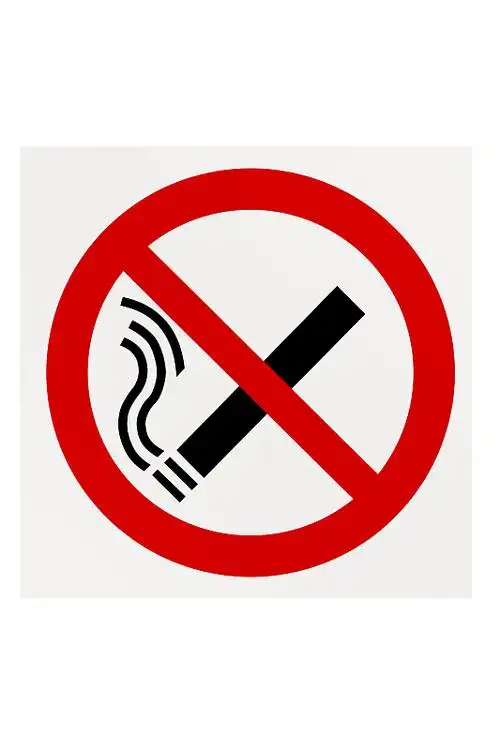Title: The Inflammatory Spark: How Smoking Fuels Ventricular Arrhythmias in Cor Pulmonale
Introduction
Chronic obstructive pulmonary disease (COPD) and its consequent cardiac complication, cor pulmonale (right heart failure secondary to lung disease), represent a significant global health burden. A critical and often fatal event in the trajectory of these patients is the onset of sudden cardiac death, frequently precipitated by malignant ventricular arrhythmias. While hypoxia, acidosis, and right ventricular strain are acknowledged contributors, a potent and modifiable risk factor stands out: cigarette smoking. This article delves into the intricate pathophysiological mechanisms by which smoking not only initiates the pulmonary disease but also actively promotes a pro-arrhythmic state, dramatically increasing the risk of ventricular tachycardia and fibrillation in individuals with cor pulmonale.
Part 1: The Foundation – Cor Pulmonale and Arrhythmogenesis
To understand smoking's role, one must first appreciate the arrhythmogenic substrate created by cor pulmonale itself.
-
Right Ventricular Pressure Overload and Remodeling: Chronic hypoxia from lung disease induces pulmonary vasoconstriction, leading to pulmonary hypertension. The right ventricle (RV) hypertrophies and dilates to compensate for this increased afterload. This structural remodeling alters the normal electrophysiological properties of the myocardium. Cardiomyocyte stretch, a direct result of dilation, can mechanically activate ion channels, lowering the threshold for abnormal impulses. Furthermore, hypertrophy is associated with fibrosis—the deposition of electrically inert scar tissue. This fibrosis disrupts the uniform conduction of electrical impulses, creating areas of slow conduction and block, which are the cornerstone for re-entrant arrhythmias, the most common mechanism for ventricular tachycardia (VT).
-
Systemic Effects of Chronic Lung Disease: Chronic hypoxia and hypercapnia (elevated blood CO₂) lead to acidosis and heightened sympathetic nervous system activity. Catecholamines (like adrenaline) increase heart rate and myocardial excitability. Electrolyte imbalances, particularly hypokalemia and hypomagnesemia, are common in COPD patients due to factors like diuretic use and respiratory acidosis, further destabilizing cardiac cell membranes and promoting ectopic activity.
Part 2: Smoking as the Potent Arrhythmic Catalyst
Smoking is not a passive bystander; it is an active driver of arrhythmogenesis through multiple synergistic pathways.
-
Acute Catecholamine Surge: Nicotine is a powerful sympathetic stimulant. Each cigarette delivers a bolus of nicotine, causing a rapid release of norepinephrine and epinephrine. This creates transient periods of dramatically increased myocardial oxygen demand, heightened automaticity, and shortened ventricular refractory periods—a perfect storm for triggering arrhythmias in a heart already on the brink.
-
Hypoxia and Carbon Monoxide Poisoning: Smoking acutely worsens the underlying hypoxia in a COPD patient. Furthermore, carbon monoxide (CO) in smoke binds to hemoglobin with an affinity over 200 times that of oxygen, forming carboxyhemoglobin. This drastically reduces the oxygen-carrying capacity of the blood, leading to myocardial ischemia. Ischemic myocardium is highly irritable, with altered action potentials and a pronounced tendency toward delayed afterdepolarizations (DADs) and triggered activity.
-
Systemic Inflammation and Oxidative Stress: Smoking is a primary driver of a systemic pro-inflammatory state. It elevates levels of C-reactive protein (CRP), interleukin-6 (IL-6), and tumor necrosis factor-alpha (TNF-α). This inflammatory cascade has direct cardiotoxic effects. Cytokines can alter the expression and function of cardiac ion channels (e.g., downregulating potassium channels, prolonging action potential duration) and promote interstitial fibrosis, thereby worsening the existing structural substrate for re-entry. Concurrently, the immense oxidative stress from thousands of toxins in cigarette smoke damages lipids, proteins, and DNA within cardiomyocytes, disrupting calcium handling and mitochondrial function, key factors in maintaining electrical stability.
-
Autonomic Dysfunction: Chronic smoking disrupts the balance of the autonomic nervous system, leading to a predominant sympathetic tone and reduced parasympathetic (vagal) activity. This imbalance is a known risk factor for arrhythmias, as the calming effect of the vagus nerve on the heart is lost.
Part 3: The Synergistic Arrhythmic Storm
The danger lies in the powerful synergy between the substrate (cor pulmonale) and the catalyst (smoking). A stable but compromised patient with cor pulmonale has a heightened baseline risk. The act of smoking superimposes acute, profound insults:

- Acute-on-Chronic Ischemia: The CO-induced and vasoconstriction-induced acute ischemia hits a ventricle already chronically starved of oxygen due to hypertrophy and reduced coronary perfusion pressure from pulmonary hypertension.
- Adrenergic Storm on a Sensitized Myocardium: The nicotine-induced catecholamine surge acts upon a heart already exposed to chronic sympathetic activation from hypoxia and whose cells are electrically unstable due to remodeling and fibrosis.
- Inflammatory Amplification: Smoking adds fuel to the pre-existing fire of systemic inflammation associated with COPD itself, accelerating fibrotic and electrophysiological remodeling.
This combination dramatically lowers the energy required to initiate a lethal arrhythmia. A single premature ventricular contraction (PVC), which might be benign in a healthy heart, can easily initiate a run of re-entrant VT in this sensitized environment, potentially degenerating into ventricular fibrillation (VF).
Clinical Implications and Conclusion
The evidence underscores that smoking cessation is not merely a preventive measure for lung disease but a critical anti-arrhythmic intervention in patients with established cor pulmonale. The benefits extend beyond slowing COPD progression. Cessation reduces sympathetic tone, improves oxygen delivery, lowers systemic inflammation, and may, over time, allow for some reversal of adverse remodeling. Aggressive management of cor pulmonale—with supplemental oxygen, bronchodilators, diuretics, and specific pulmonary vasodilators—aims to stabilize the substrate. However, continuing to smoke actively counteracts these therapeutic efforts, maintaining a persistent and potent trigger for arrhythmias.
In conclusion, in the complex pathophysiology of cor pulmonale, cigarette smoking acts as a multifaceted engine of ventricular arrhythmogenesis. It exacerbates ischemia, unleashes neurohormonal chaos, fuels systemic inflammation, and directly poisons the myocardium. For a patient with pulmonary heart disease, smoking is akin to holding a lit match to a fuse already connected to a bomb. Recognizing this direct causal link is paramount for clinicians to emphasize the life-saving necessity of smoking cessation with utmost urgency to their patients.









